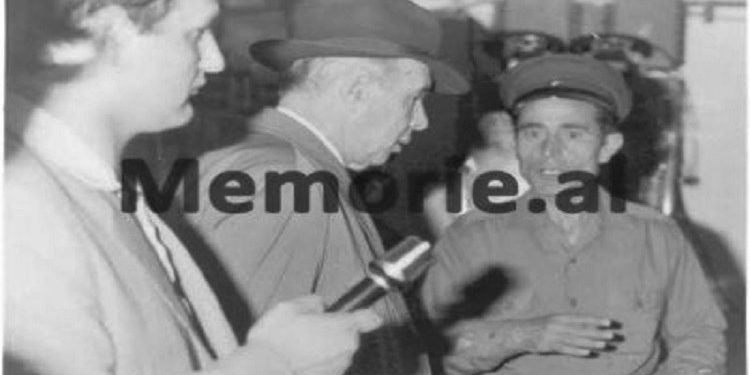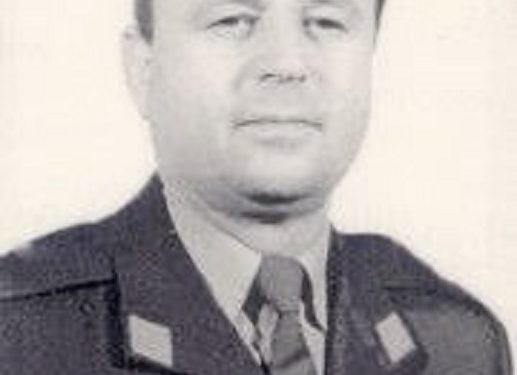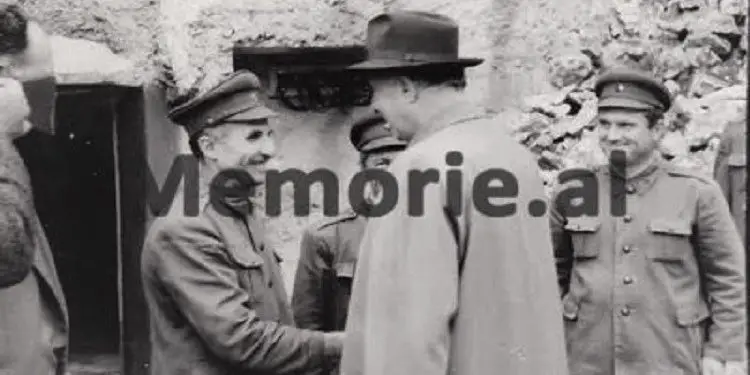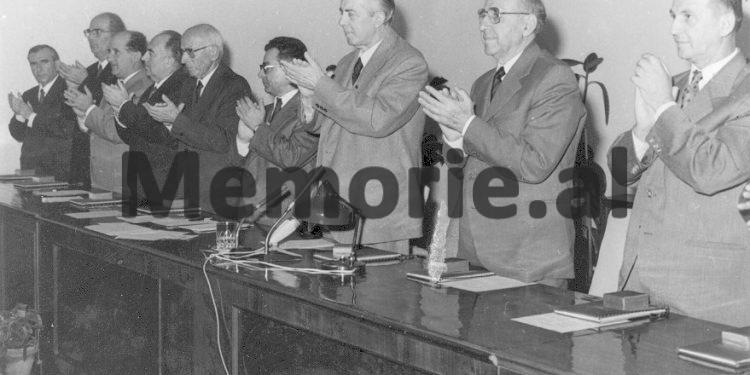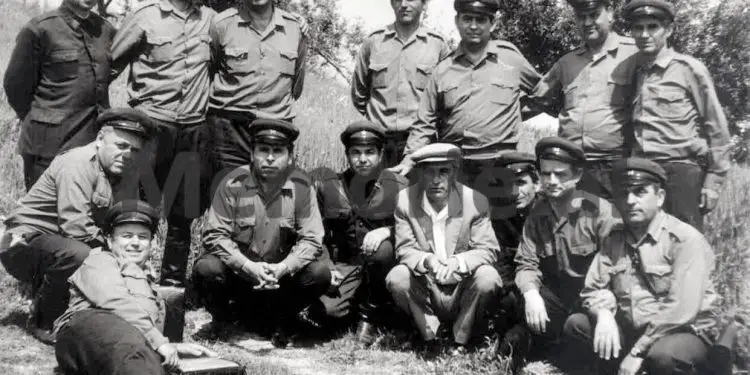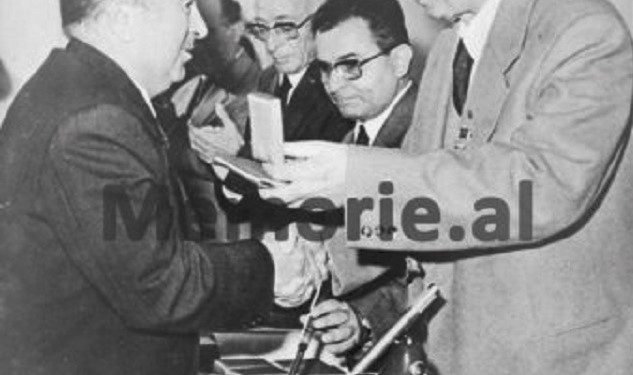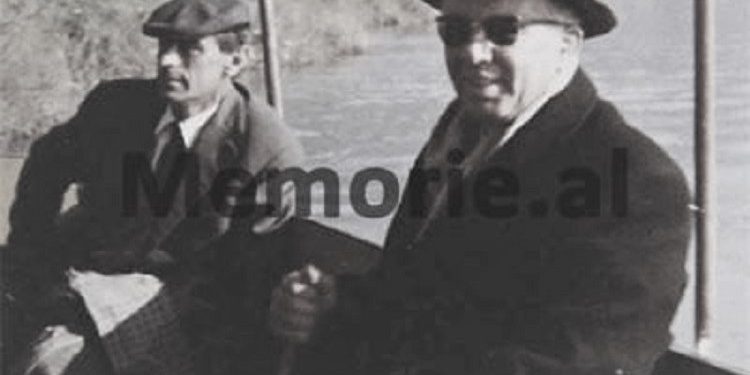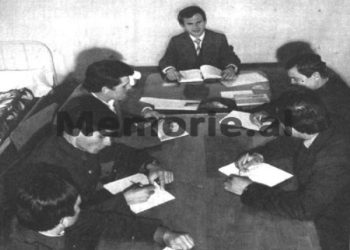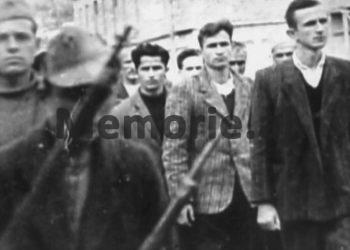From Kujtim Boriçi
Part four
Continues from last issue
Memorie.al / As part of the celebrations of the 70th anniversary of Liberation, the Ministry of Defense opens for the first time to the public the anti-nuclear bunker on the outskirts of Tirana, built during the communist regime, “a palace locked in the heart of a hills full of old wonders and new surprises”, as it said in the Prime Minister’s announcement about this activity. But what is inside this five-story bunker built in such a way that it could withstand even a nuclear war that could involve Albania? It is a gigantic construction with five underground floors, built during the 70s. There are 501 rooms underground, where in case of war the Political Bureau of the Central Committee of PPSh and the General Staff of the Army were housed. There are apartments, offices, and even large halls where the General Staff and the People’s Assembly would meet in case of war. To better acquaint you with this curiosity and the time in which it was built, we are republishing some parts of the memoirs of the former chief of the General Staff of the Army Veli Llakaj, authored by Kujtim Boriçi, which talks about the construction of this refuge…!
After the breakdown of our country’s relations with the Soviet Union, with the interest and direct order of Enver Hoxha, Commander-in-Chief of the Armed Forces, according to the war documents of the time, in the Ministry of People’s Defense, it was decided that; the headquarters of the command and the General Staff, in the region of Bërzhita, should be transferred to a reserve headquarters and a new headquarters should be built in the region of Linza.
The construction of the new command post, all underground, was done in accordance with the new concepts of defense support in our forces. It was a very functional object and perhaps unique in the Balkans and beyond. The main burden of this important task fell to Veli Llakaj, the Chief of the General Staff.
He, as well as his colleagues, remember that; new command post, it was a voluminous job, but above all, a very special responsibility. The war shelter, which was built in Linza, Tirana, from which, in an expected war, Enver Hoxha and the General Staff of the Army would direct the situation, was built to withstand direct air strikes, up to and including atomic bombings. , with protective capabilities from direct impact, from shock waves, thermodynamic radiation, penetrating radiation and the effects of damage from chemical and bacteriological weapons.
It was equipped with multiple armored doors, ventilation equipment, powerful aggregates for lighting and heating, humidity measuring and control equipment. Inside, in the tunnels, there were numerous sleeping rooms, showers, functional hydrosanitary nodes, a cinema and meeting hall, with a capacity of 500 people, cafes, recreation areas, halls and spacious environments for the commanding and service forces, all weapons, logistics reserves, food, etc.
After the completion of the works in the underground “city” of war, Enver Hoxha, who was the orderer and one of the most interested in the realization of the project, in the shortest possible time and in the quality parameters, had confirmed the visit to this important object in particular, to see and verify closely, the degree of readiness of the country’s defense structures, in an improvised war situation.
Memories of the former chief of the General Staff of the Army, Veli Llakaj
“Before Enver Hoxha came to the command post, Mehmet Shehu (Prime Minister and Minister of Defense, at the same time) and Veli Llakaj, as the Chief of the General Staff, had for about a month made surprise checks at the command post, in the centers of liaison, directly verifying the level of readiness, with all corps commands and directorates in the ministry”, remembers Llakaj.
On June 24, 1978, Enveri in the new command post, in Linz
The headquarters of the headquarters of the General Command in Linza, Tirana, which in the complex was an underground “town”, for a month, under the direction and control of Veli Llakaj, the chief of the General Staff of the Army, had not only been subjected to a systematic control, for the level of combat readiness, in all elements, but it was fully equipped, with all the necessary logistics, pending the arrival for inspection of Enver Hoxha, Prime Minister Mehmet Shehu, as well as other leaders high, of the party and the state of that time.
“For the situation itself, the problems that the country’s army was going through, the defense of the homeland was evaluated, as; duty upon duty, the inspection of the Commander-in-Chief in the environments where a possible war against Albania would be waged, was a great responsibility, not only for the Chief of the General Staff of the Army, the officers of the Armed Forces, but especially for what was done with the design and implementation of various elements of war planning”, writes Veli Llakaj in his diary.
“To receive Enver Hoxha, continues Llakaj in his secret diary, and those who accompanied him in this important inspection, a beautiful tent was also built, in a picturesque place, outside the entrance of the underground tunnel. On June 24, 1978, at 10:00, Enver Hoxha, Mehmet Shehu, Adil Çarçani, Kadri Hazbiu, etc. arrived. They were received by the Chief of the General Staff of the Army, by the secretary of the Party Committee of the Ministry of Defense, Ali Vukatana, as well as the heads of the directorates, in the Ministry of Defense.
Initially, the Commander-in-Chief, Enver Hoxha and other senior leaders of the state, accompanied by the hosts, settled in the tent prepared at the entrance of the underground “city”, for this purpose…! For the very situation that the country was going through, even the Albanian army at that time, the inspection of the new war command post by Enver Hoxha, was not only an assessment and his direct commitment as Commander-in-Chief of the Armed Forces, for ensuring an effective direction of combat operations against a possible aggression of Albania, but also a “validation” for the work done in this important object.
The forces of the new command post of the General Staff were put on standby no. 1, where the maximum responsibility, for the combat duty, could not be separated from the joy and privilege that, the major officers of the army, to the simple switchboards, that would enable the connection of Enver with subscribers. In the prepared tent, according to Shametaj, Enver Hoxha was reported, by officials of the Ministry and directors of the directorates, the situation of combat readiness, in units and departments, the readiness of weapons and services, the condition and equipment of the new command post, as and the degree of direction of command in situations of a possible war against the country.
The first to report to Enver was Veli Llakaj, the chief of the General Staff of the army and the main person who answered to the Commander-in-Chief for all the combat elements of the readiness of the defense structures. “With an accurate report down to the details, due to the professional preparation, but also due to the fact that I knew in detail the new command post and the degree of readiness, in all its elements, I reported to Enver, speaking briefly clear. I saw that he followed me closely, without interrupting me. Express satisfaction, which seemed to give us wings, me and those who were in this inspection. After me, the directors also reported”, continues Llakaj.
With the expression of Enver, addressed to Mehmet: “Let’s see concretely, how we are ready for war”, the reports were closed. “Enveri, Mehmeti and the other leaders of the state, in this visit, listened carefully to the reports, but initially they did not express evaluations, apparently, they left them for the completion of the concrete inspection, in the underground town…! After the reports of the military majors, Enver Hoxha, Mehmeti and other companions, first started the inspection from the office and underground facilities of the Chief of the General Staff, to continue further through the underground facilities.
Enver Hoxha’s expression: “Let’s be ready for war at any moment”, addressed to Mehmet at the end of the reports that the senior officers of the Ministry of Defense made before the practical inspection of the new war command post, on June 24, 1978, put in the embarrassment of all the cadres, in the accompaniment they gave to the Commander-in-Chief, in the combat positions in the underground “city” of Linza, especially the head of the General Staff, Veli Llakaj.
“I had heard and knew that Enveri and Mehmeti, unlike the high state leaders of that time, when they came for inspections, they came prepared, so during the explanations that not only I had to give, but everyone, precision and argument were needed …”, writes about that moment in his secret diary, Llakaj. While Mehmet Shehu himself, although he was at Enver’s side, he sat as if on “thorns”, waiting for the findings and assessments that Enver would give, for the central command post of the war and, above all, for the level of readiness.
Moving a few steps, Enveri approached the officers who were on duty. He approaches telegraph operator Diana Mata, greets her and asks: “Who are you related to?” “With Korça”, answers Diana. “Yes, well, don’t connect us to Korça”, Enveri orders Diana, focused on the devices. At that moment, Enveri looked at the clock to verify the connection time with the subscriber he requested.
Mehmet Shehu did the same, but in the latter, I also noticed a certain concentration of concern, which was related to the success or failure of the operation of the requested connection. As soon as Diana finished the call, the correspondent from Korça answered immediately, without passing a second!
Enver Hoxha was very impressed that he did not delay any time and was reading Korça’s answer with concentration. We were anxious. He looked at me, then at the others and laughed. Everyone laughed, but I didn’t. Nor Mehmet Shehu. Enveri was very satisfied with the level of readiness…”, it continues in Llakaj’s diary. Memorie.al




